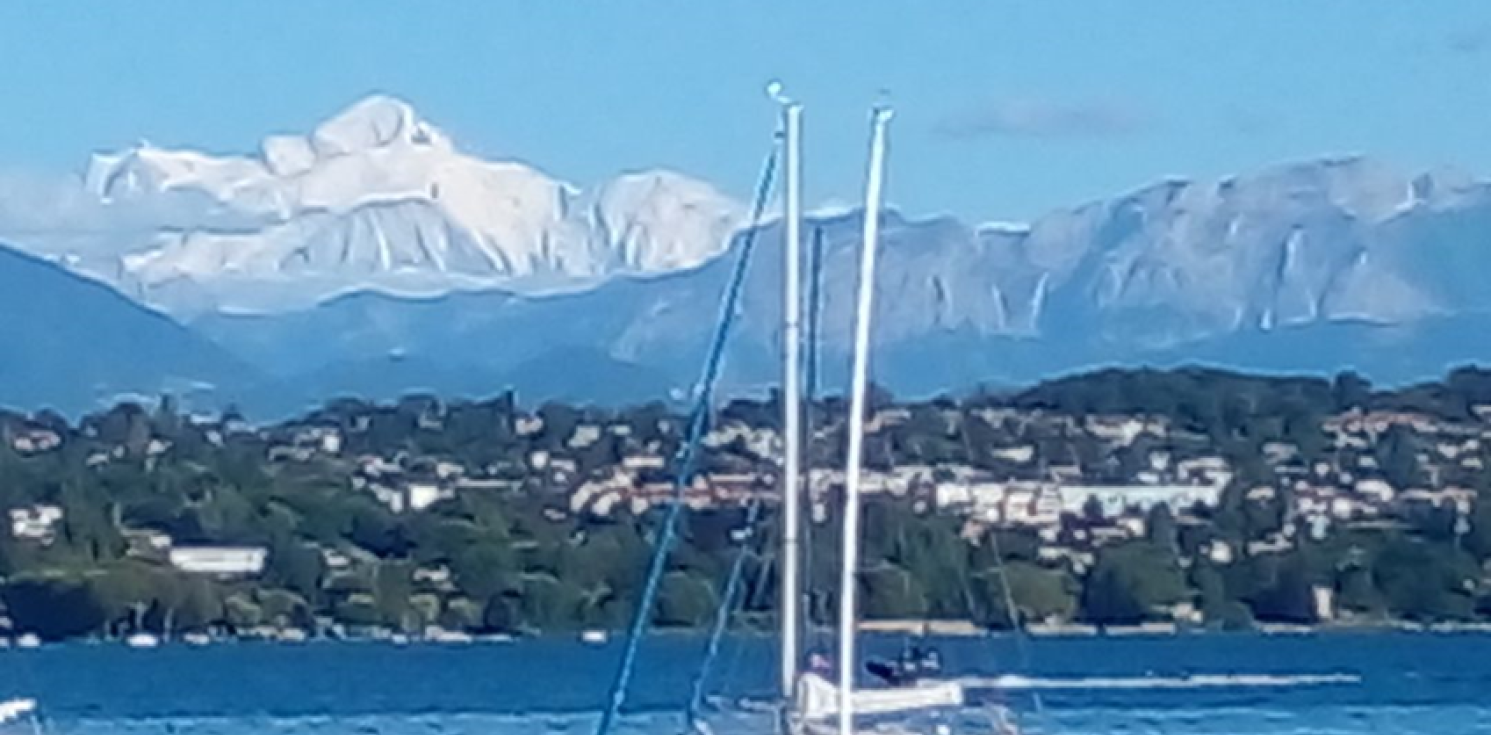‘Being found in human form’: A reflection by Clare Amos, Director of Lay Discipleship

'The Faith in Europe blog, written by Clare Amos, exploring one or more of the lectionary readings each week from a European perspective, has returned with a contribution for the Season of Creation, looking at Philippians 2.5-11. Read her blog post below. You can also read it directly from her blog:
Throughout September, and up till St Francis’ day, October 4, in recent years many churches have kept this period as ‘the Season of Creation’. That has certainly been true in Holy Trinity Geneva, the church in this diocese with which I have the most to do. Different aspects and themes linked to creation have been ‘marked’ each Sunday. But I have been struck by the way in which (certainly this year) it has been often quite difficult to ‘match up’ the biblical readings suggested by the Common Worship lectionary and this focus on creation. The links, when they have been made, feel rather forced. Perhaps the official bodies in the Church of England may want to give some thought to this in the future.
But… this coming Sunday we have a lectionary ‘pearl of great price’, namely the selected Epistle, which is Philippians 2.1-13. Not only is this passage, centred on the ‘hymn’ that runs from verses 5-11, beautiful, joyful and lovely, but it can also be drawn on to encourage us to think about what it means to be human, especially in terms of human responsibility for creation.
By background, I am an Old Testament scholar and teacher, and I have written a commentary on the Book of Genesis which initially appeared in 2004, and which came out in a second edition with the more interesting title Birthpangs and Blessings, last year.
So I am of course profoundly interested in the creation stories of Genesis 1 and 2. I both cherish them, but am also aware that they have their problematic elements, not least in terms of the relationship between human beings and the rest of creation.
In particular the account of the creation of humanity ‘in the image of God’ in Genesis 1.26-28 has in recent decades been faulted and held (at least partially) responsible for previous human exploitation of creation. The problem centres on the ‘blessing’ of humanity by God, ‘Be fruitful and multiply, and fill the earth and subdue it: and have dominion over the fish of the sea and over the birds of he air and over every living thing that moves upon the earth. (Genesis1.28). The words translated as ‘subdue’ and ‘have dominion’ are words that in other contexts imply violence – even rape.
To put the question bluntly and starkly, ‘Do human beings have the right to rape the earth?’
Of course that is not the language that most Christians use, certainly not officially. Like other Churches the Church of England often draws on the term of ‘stewardship’, for example in a 1991 Board of Social Responsibility report, which maintains, ‘Stewardship implies caring management rather than selfish exploitation’.
But that term of stewardship is itself challenged by other, for example, James Lovelock who said, ‘The idea of human stewardship of creation is “sheer hubris”.’ Such a challenge has been made increasingly vocally over the last 50 years. It is often said that the ‘wake up call’ for Christians was that made by Lynn White in 1967, ‘Especially in its western form, Christianity is the most anthropocentric religion the world has seen’. (The Historic roots of our Ecologic crisis, 1967).
How can we move beyond this impasse? I would concur with a remark made by John Gatta who comments, ‘To a surprising degree, exegetical discussion of Christianity’s relationship to environmental ethics and practice has been confined within a narrow band of Old Testament texts. In fact the scriptural site of this debate rarely extends beyond the creation stories and “dominion over the earth” language clustered in those first two chapters of Genesis. Even fewer New Testament passages have attracted serious reflection on the topic.’ (John Gatta, The Transfiguration of Christ and Creation, 2011)

A glorious view of Mont Blanc from Genthod near Geneva earlier this summer. How much longer will the Alps remain ice-capped in summer?
I agree with Gatta that it is vital that Christian reflection on creation and the environment should not be restricted to Old Testament texts but draw in key New Testament insights.
And here – at one remove – Philippians 2.5-11 can be very helpful.
Let’s return for a moment to Genesis, and in particular the affirmation that humanity was created in the ‘image and likeness of God’. It is that which gives ‘us’ our authority in relation to creation. What precisely it means for human beings to be created in God’s image has been one of the most discussed of all theological questions. But what is certainly the case is that among several New Testament writers there is a clear understanding that the ‘image of God’ was found with a particular fullness in the person of Jesus Christ. The image may not have been lost by other human beings, though one of our Anglican prayers of confession rightly speaks of it being ‘marred’ in us. But it certainly shines with a particular intensity in the person and face of Jesus Christ. You can find the actual word ‘image’ used to describe Christ in Colossians 1.15. But even when the word ‘image’ itself is not used, it is clear that the understanding is there. So for example with John 1.14, ‘we have seen his glory’ or Hebrews 1.3, ‘he is the reflection of God’s glory and the exact imprint of God’s very being’. Or here, in Philippians 2, when I am quite sure that verse 6, which speaks of Christ as being ‘in the form of God’, is implicitly drawing on Genesis’ understanding of human beings as being ‘in the image of God’.
But then, and this is the particular twist that Philippians offers us, it is precisely because Christ is ‘in the form (image) of God’, that he humbles and empties (kenosis) himself ‘taking the form of a servant’. Which begins to turn the relationship between humanity and the rest of creation on its head, to be one of ‘service’ rather than ‘hierarchical stewardship’. In formulating these ideas I have drawn on an article by Román Guridi: Imago Dei as Kenosis: Re-imagining Humanity in an Ecological Era “… kenosis must come to the fore in theological reflection on humanity before the current ecological crisis. It is a meaningful, sound, and timely interpretation of the imago Dei… It is Jesus’ own kenosis that reveals the true face of divine power – power in love – which decidedly aims at the wellbeing and fulfillment of creation. This twofold movement of self-limitation and self-giving love can certainly inspire the desirable renovation in theological anthropology.’. Guridi’s article is available via the internet and it is well worth reading in full.
There is much more that could be said on this: but blogs should not get too long. But I draw your attention to a glorious hymn ,’Source and Fount of All creation’ by Peter Baelz, former Dean of Durham Cathedral, which refers to Jesus Christ as ‘Nature’s poet, nature’s priest’. It captures this idea in poetry and is lovely to sing. It can be found here Source and Fount of All Creation | St. James Music Press (sjmp.com)
Canon Dr Clare Amos
Director of Lay Discipleship,
Diocese in Europe


